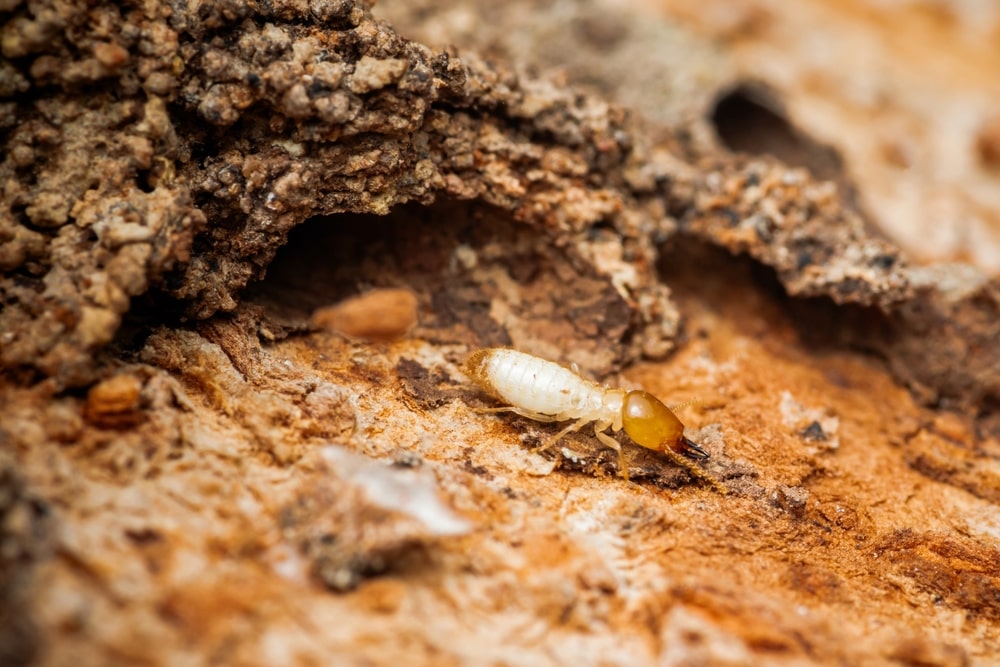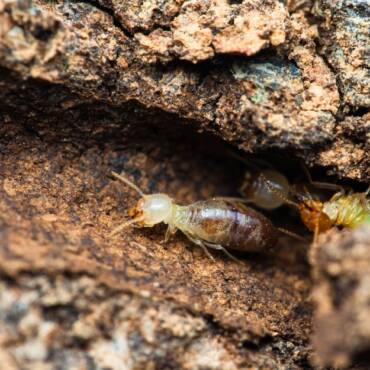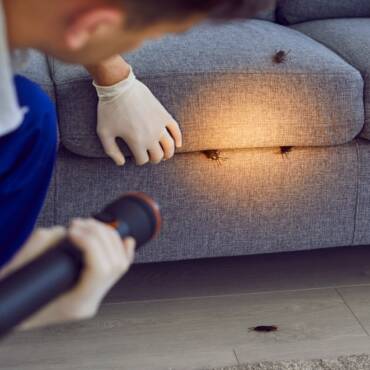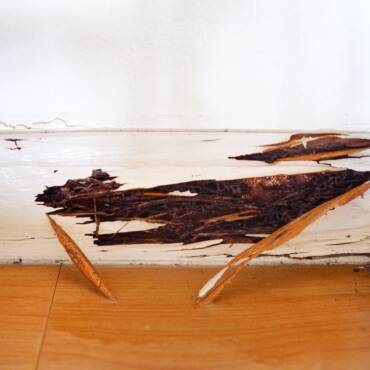Termites are among the most destructive pests in Australia, especially in areas like Brisbane, Logan, and Ipswich, where they thrive in warm climates. If you’ve ever wondered, “What do termites look like?” you’re not alone. These tiny pests can cause significant damage to wooden structures, and it’s essential to understand what they look like to detect them early and take preventive measures. In this blog, we’ll explore the physical characteristics of termites, the signs of termites in your home, and what to do if you suspect an infestation.
What Are Termites, and What Do They Look Like?
Termites are small, social insects that primarily feed on wood, cellulose, and other plant-based materials. While many people confuse them with ants, termites have distinct differences. The most common termite species in Brisbane and surrounding areas include the Coptotermes (subterranean termites), which are notorious for causing structural damage, and the Nasutitermes (tree termites), which typically infest trees.
Termites are generally small, soft-bodied insects with pale, translucent, or white coloring. Their appearance varies depending on their caste within the colony, but typically, termites are divided into three main groups: workers, soldiers, and reproductive (also known as swarmers).
- Worker Termites: These are the most numerous in a colony. They are creamy white or pale yellowish and have soft bodies. Worker termites are responsible for feeding the colony and building tunnels.
- Soldier Termites: Soldier termites are larger than workers and have a darker, yellowish-brown coloring. They have large, noticeable heads and powerful jaws used to defend the colony.
- Reproductive Termites (Swarmers): These are the winged termites that you may see flying around during a termite swarm. Swarmers have a darker, more brownish color and are responsible for mating and establishing new colonies.
How Do Termites Differ From Ants?
One of the most common questions people ask is, “What’s the difference between ants and termites?” While ants and termites may seem similar, especially when you spot flying insects, there are key differences in their physical features and behavior.
- Size: Termites are usually smaller than ants, measuring between 1/8 and 1/2 inch in length, while ants can vary greatly in size.
- Body Shape: Termites have a more uniform, straight body, whereas ants have a noticeable pinched waist.
- Antennae: Termites have straight antennae, while ants have bent antennae.
- Wings: When flying, termites have two pairs of equal-length wings, while ants typically have wings of unequal length.
- Color: Termites are usually pale or translucent, while ants tend to have a range of colors depending on the species.
In Brisbane and surrounding areas, if you’re spotting pests that seem to be damaging wooden structures, they are likely termites and not ants. Pay attention to these differences to identify the pest correctly.
Common Signs of Termites in Your Home
It’s essential to know the early warning signs of termites to prevent extensive damage to your property. While termites are often silent invaders, there are a few key signs that homeowners in Brisbane should look out for:
- Mud Tubes on Walls: Subterranean termites build mud tubes for protection while traveling between their nests and food sources. These tubes are usually made of soil, wood, and saliva, and they can be found along the foundation or interior walls.
- Hollowed or Damaged Wood: If you tap on wooden structures and hear a hollow sound, it may indicate that termites have infested the area. Termites feed on the interior of wood, leaving the outer layer intact but compromising the structure.
- Swarmers or Flying Termites: Flying termites or swarmers are often one of the most obvious signs that a termite colony is nearby. These winged termites emerge from their nests during mating season (usually after rainfall) and can be found near light sources.
- Frass (Termite Droppings): Termite droppings, also known as frass, are small, wood-colored pellets that termites expel after consuming wood. These can accumulate near infested areas.
- Signs of Water Damage: Termites often cause water-like stains or swelling on wood and other surfaces. While this might be confused with water damage, it could also be a sign of a termite infestation.
What Do Termites Look Like in Australia?
In Australia, termites are a significant concern for homeowners in areas like Brisbane, Ipswich, and Logan. While the appearance of termites can vary depending on the species, most termites in Australia are small, pale insects. Subterranean termites are among the most common and can cause severe damage to wooden structures, often going unnoticed until it’s too late.
- Termite Eggs: Termite eggs are small, oval-shaped, and creamy white. If you notice tiny clusters of these eggs, it’s a sign that termites are present and breeding.
- Larvae of Termites: Termite larvae are white, soft, and worm-like in appearance. They are often found within the wood they consume and are a crucial part of the colony’s development.
While worker termites are the most commonly seen, the presence of termite eggs or larvae in your property could indicate that the colony is thriving and multiplying rapidly.
What Do White Ants Look Like in Brisbane?
Another common misconception is that termites are “white ants.” However, white ants are simply another name for termites. They look very similar to ants but are much paler and lack the segmented body shape of ants. Their pale, translucent color makes them look almost like tiny, soft-bodied ants. If you’re seeing white ants around your home, it’s essential to check for signs of termite damage to avoid a larger infestation.
How to Prevent and Control Termites in Your Home
If you’re dealing with termites, it’s essential to act quickly to prevent further damage. Here are some preventative measures to reduce the risk of termites in your Brisbane home:
- Regular Inspections: Have your property inspected by a professional pest control expert for termites at least once a year. Early detection is key to minimizing damage.
- Seal Gaps and Cracks: Termites can enter your home through even the smallest cracks in the foundation or walls. Make sure to seal any openings to prevent their entry.
- Remove Wooden Debris: Keep firewood, wooden furniture, and other materials away from your home’s foundation to eliminate potential food sources for termites.
- Install Termite Barriers: For homes at high risk, consider installing a physical or chemical termite barrier around the property. These can prevent termites from reaching your home.
- Use Termite-Resistant Materials: When building or renovating, consider using termite-resistant materials such as steel or treated timber.
Frequently Asked Questions About Termites
1. What color are termites?
Termites are generally pale or white, with some species appearing yellowish or light brown, especially during the swarming phase.
2. What are the signs of termites in my house?
Look for mud tubes, hollowed wood, flying swarmers, frass (droppings), or water-like stains on wooden surfaces as signs of termite activity.
3. What do termites eat?
Termites primarily feed on wood, paper, and other cellulose-based materials, which they break down using enzymes in their digestive system.
4. Can termites be seen during the day?
Termites are mostly nocturnal, but during their swarming phase, you may spot flying termites or swarmers around your home.
5. How long do termites live?
The lifespan of a termite depends on its caste. Worker termites live about 1-2 years, while reproductive termites (swarmers) can live up to 5 years or more.
6. What do termites look like when they swarm?
Swarming termites are winged, brown or black in color, and are usually seen during the warmer months. They may appear in large numbers around light sources.
Conclusion
Understanding what termites look like and recognizing the signs of their presence is crucial for protecting your home in Brisbane, Logan, Ipswich, and surrounding areas. Termites can cause significant damage if not detected early, but with regular inspections and preventive measures, you can safeguard your property. If you suspect a termite infestation, contact a professional pest control service to address the issue before it becomes a more significant problem.




